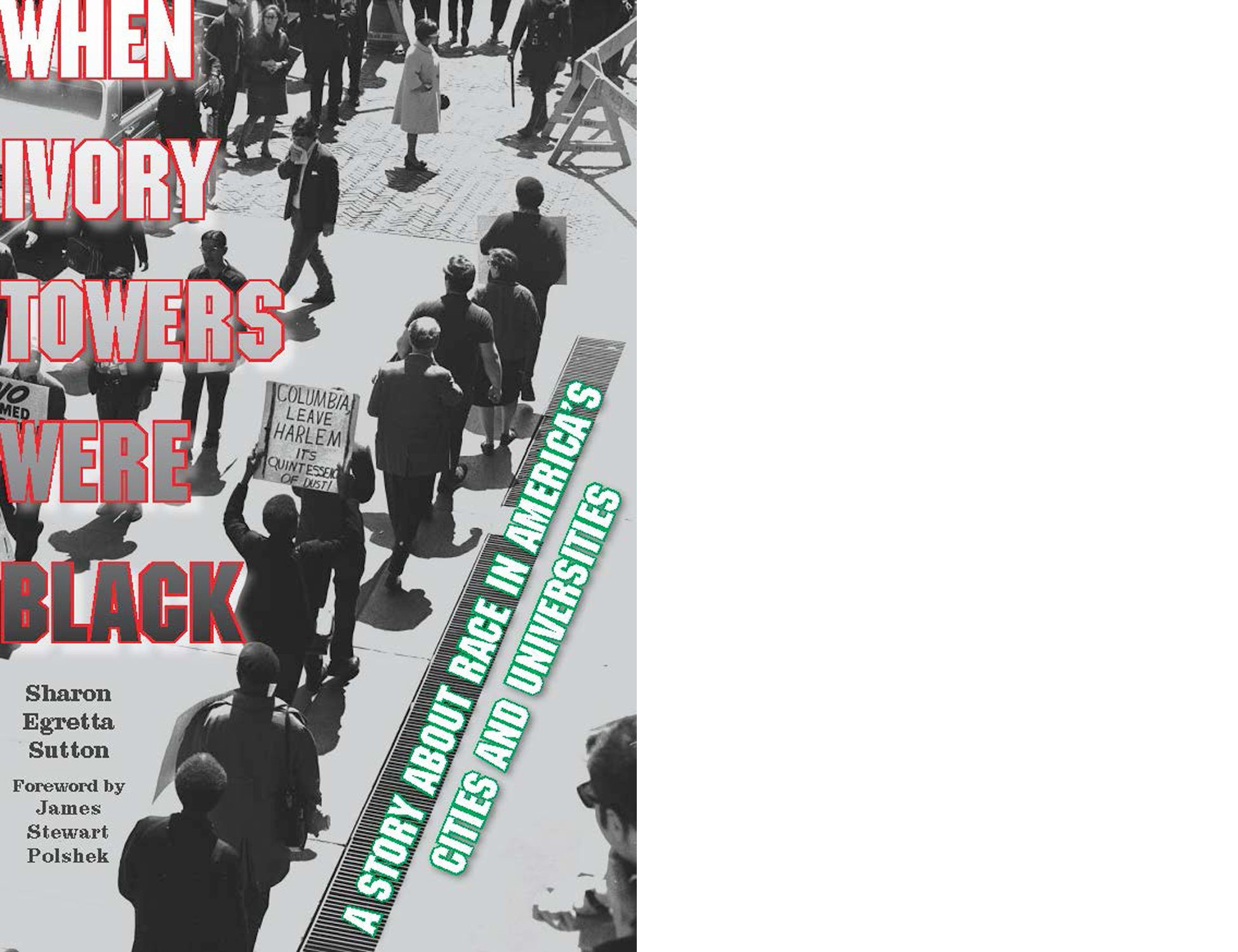by: ac
Dr. Sharon Egrette Sutton’s recent book, When Ivory Towers Were Black, is a three-pronged exploration of the cultural, educational, and personal events surrounding the 1968 student insurgency on the Columbia University campus. Sutton describes her experience as a minority student after the insurrection and tells the tale of Columbia before and after. During her Oculus Book Talk lecture on 02.13.17 at the Center of Architecture, Sutton explained that, unlike today, when diversity aspiration ally seen as a way to balance and improve communities, in 1968, the fight against racism and efforts towards creating diverse academic communities were issues of national security. The summer of 1968 numbered 163 racial confrontations in the inner cities of the US. The Ivy League was about to become ground zero for change.
Sutton’s chapter on the student insurgency covers how thirty or so architecture students occupied the architecture school’s Avery Hall, protesting the racist and expansionist policies of the university. The breaking up of the occupation was a shocking, violent event. The Avery insurgents, who had been conceptualizing a new approach to architectural education during the sit-in, became fully radicalized. The Columbia University insurgency uncoupled the educational value system that the hallowed Columbia halls had maintained and, as a result, the architecture curriculum exploded. When outdoor “teach-ins” organically grew out of the Strike Coordinating Committee boycott of classes held inside Columbia buildings, a new way to learn became possible. Sutton carefully describes the “platform” curriculum for the architecture school, the one she walked into in 1970.
Sutton, along with her 56 minority peers, experienced a climate of academic freedom and experimentation during her time studying architecture. Students looked to the adjacent Harlem community for inspiration and moral guidance. Columbia’s community-based Architects Renewal Committee of Harlem (ARCH) is a fascinating precursor to the design/build Rural Studio program at Auburn University; Columbia University was at the forefront of social justice design challenges and advances.
Sadly, after an accreditation body found fault with the university’s structural problems in general, this curriculum revolution ended, as did the architecture school’s mandate to recruit minority students. Sutton records a finite moment of moral clarity and invention in architectural education.
Sutton digs deeply into a discussion of the academic administrative machinations, but it takes a particular mind to follow all the slights and injustices that an academic environment can bring forth. This section is not as strong as her narrative of the insurgency and its major players. James Stewart Polshek comes off as a young man trying to maintain authority rather than an insightful leader during his time as Dean of GSAPP, and other administrators are hard to distinguish in the narrative. The aftermath of the curriculum revolution coincides with Nixon’s election, and a law and order mandate shifts the tone of academia – chilling in light of our current political climate.
Sutton’s prose is luscious and lively; the first paragraph of the introduction is a captivating prophecy of an institution breaking down and its will to rebuild for the good. Her multitude of voices, however, sometimes confuse her narrative. At times, her almost Shakespearian intimacy with the audience is at odds with her polished, academically rigorous tone that pervades the interviews and much of the text.
But ultimately, Sutton sets out a clear road map of the historical framework that these 50 or so students of color found themselves in, a road map where diversity and community inclusion is how one practices architecture and is a citizen of the world.
Event: Oculus Book Talk: When Ivory Towers Were Black: A Story about Race in America’s Cities and Universities
Location: Center for Architecture, 02.13.17
Speakers: Dr. Sharon Egretta Sutton, FAIA, Professor Emerita of Architecture and Design, University of Washington; Carol Loewenson, FAIA, LEED AP, Partner, Mitchell | Giurgola Architects
Organized by: AIANY Oculus Committee









